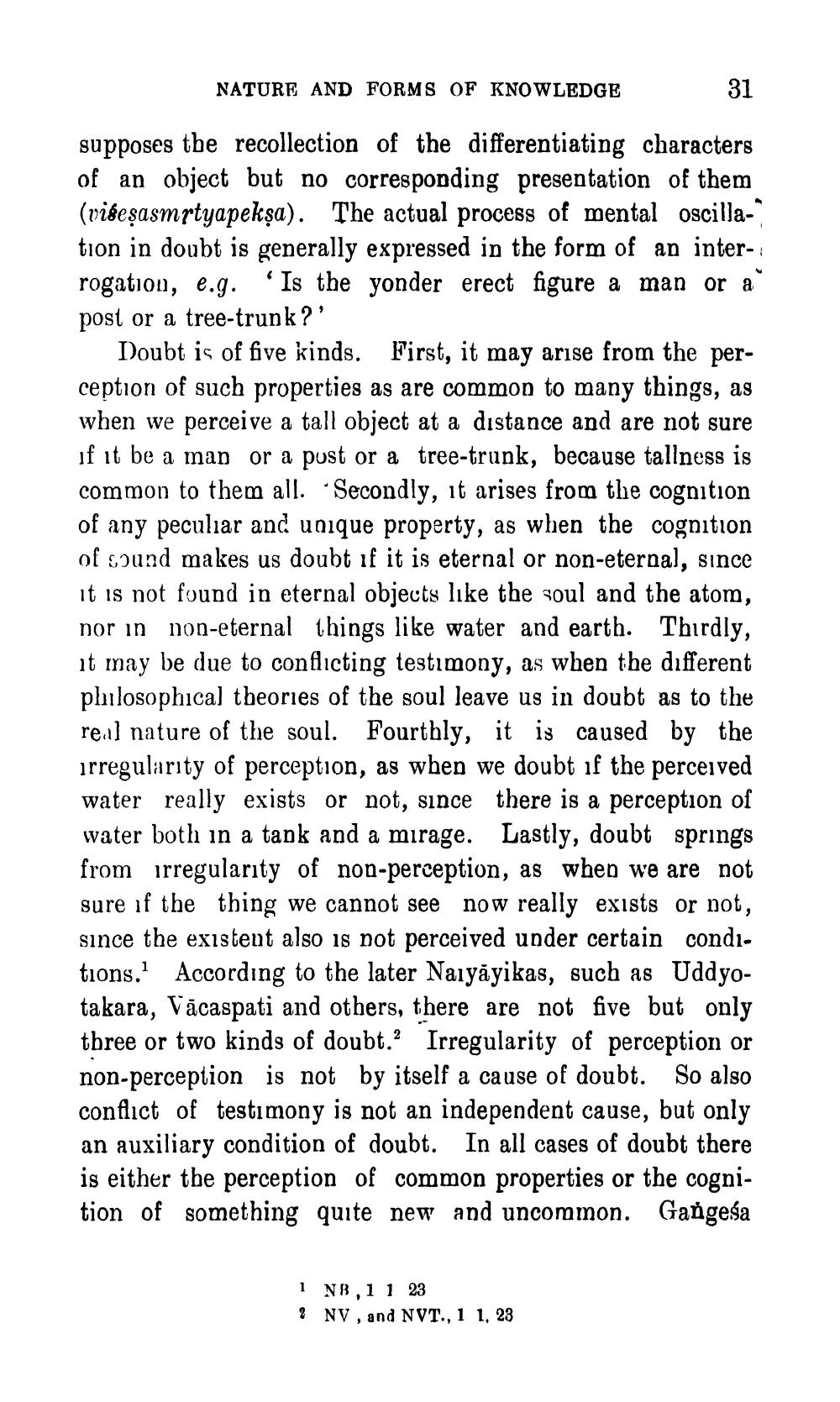________________ NATURE AND FORMS OF KNOWLEDGE 31 supposes the recollection of the differentiating characters of an object but no corresponding presentation of them (visesasmrtyapeksa). The actual process of mental oscillation in doubt is generally expressed in the form of an interrogation, e.g. 'Is the yonder erect figure a man or a post or a tree-trunk?' Doubt is of five kinds. First, it may arise from the perception of such properties as are common to many things, as when we perceive a tall object at a distance and are not sure if it be a man or a pust or a tree-trunk, because tallness is common to them all. Secondly, it arises from the cognition of any peculiar and unique property, as when the cognition of sound makes us doubt if it is eternal or non-eternal, since it is not found in eternal objects like the soul and the atom, nor in non-eternal things like water and earth. Thirdly, at may be due to conflicting testimony, as when the different philosophical theories of the soul leave us in doubt as to the real nature of the soul. Fourtbly, it is caused by the irregularity of perception, as when we doubt if the perceived water really exists or not, since there is a perception of water both in a tank and a mirage. Lastly, doubt springs from irregularity of non-perception, as when we are not sure if the thing we cannot see now really exists or not, since the existent also is not perceived under certain conditions. According to the later Naiyayikas, such as Uddyotakara, Vacaspati and others, there are not five but only three or two kinds of doubt.? Irregularity of perception or non-perception is not by itself a cause of doubt. So also conflict of testimony is not an independent cause, but only an auxiliary condition of doubt. In all cases of doubt there is either the perception of common properties or the cognition of something quite new and uncommon. Gangesa 1 NB,1 1 23 2 NV, and NVT., 1 1, 23




